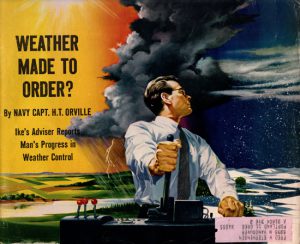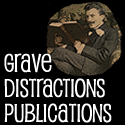
Featured Image: May 28, 1954 Collier’s magazine cover.
Weather Control as a Cold War Weapon
Source: Smithsonian
In the 1950s, some U.S. scientists warned that, without immediate action, the Soviet Union would control the earth’s thermometers
On November 13, 1946 pilot Curtis Talbot, working for the General Electric Research Laboratory, climbed to an altitude of 14,000 feet about 30 miles east of Schenectady, New York. Talbot, along with scientist Dr. Vincent J. Schaefer, released three pounds of dry ice (frozen carbon dioxide) into the clouds. As they turned south, Dr. Schaefer noted, “I looked toward the rear and was thrilled to see long streamers of snow falling from the base of the cloud through which we had just passed. I shouted to Curt to swing around, and as we did so we passed through a mass of glistening snow crystals! Needless to say, we were quite excited.” They had created the world’s first human-made snowstorm.
After the experiments of G.E.’s Research Laboratory, there was a feeling that humanity might finally be able to control one of the greatest variables of life on earth. And, as Cold War tensions heightened, weather control was seen by the United States as a potential weapon that could be even more devastating than nuclear warfare. . . . Read Complete Report
Dig a Little DEEPER: Weather Wars







Leave a Reply